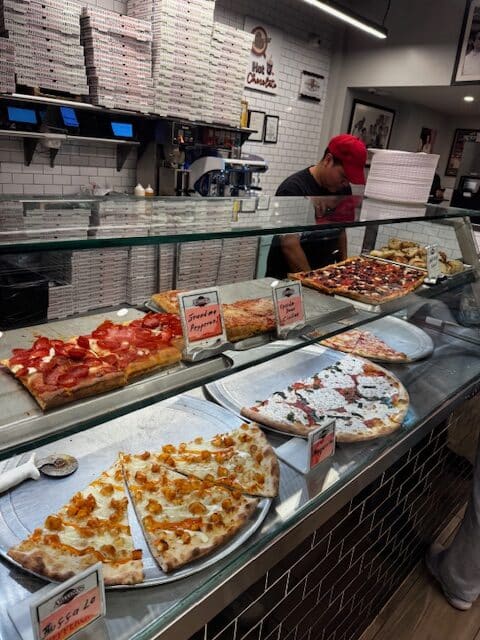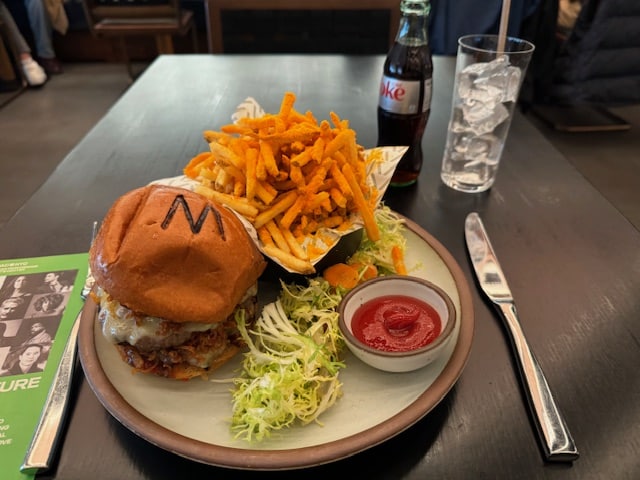The Culinary Evolution of New York: How City Planning Shaped Its Food Culture
Introduction
New York City is more than just a collection of buildings and streets; it’s an ever-evolving hub of culture, art, and culinary innovation. The heartbeat of this metropolis can be felt in its bustling avenues, its iconic skyscrapers, and most notably, in its food. In Manhattan, every corner tells a story — and often, it’s a story told through taste. From pizza slices as big as your face to carefully crafted bowls of ingredients chosen by the diner, the food of New York reflects not only the people who live there but also the city itself, shaped by history, planning, and architectural identity.

The Origin of Eating Out: An Ancient Practice
More than 1,000 years before Christ, the bustling streets of ancient Rome witnessed the birth of a cultural shift: the concept of eating out. Unlike the traditions of home-cooked meals, the speed and dynamism of urban life in Rome demanded quick, on-the-go options. This led to the emergence of one of the earliest eateries in a small corner of an alley — a shop selling bread with a simple spread of tomatoes, a humble precursor to today’s fast food. It was a product of necessity, driven by the speed of city life and a growing need for convenience.
The Rise of the New York Slice
Fast forward a couple of millennia, and a similar transformation unfolded in New York City. With an influx of Italian immigrants, the iconic New York-style pizza was born. Characterized by its large, thin crust that allows diners to fold a slice in half, this pizza was made for the fast-paced lifestyle of New Yorkers. The typical New York pizza slice is around 18 inches in diameter — significantly larger than its Italian counterpart — and its rich tomato sauce and generous cheese topping made it an instant hit. Unlike the smaller, refined pizzas of Naples, the New York slice was about accessibility, speed, and the ability to grab a meal while heading to work or strolling through the park.

Food by Demand: Adapting to City Life
The culture of food in Manhattan evolved to meet the demands of its residents. The rapid growth of the city, the zoning of neighborhoods, and the development of avenues all played a role in defining what New Yorkers ate. The grid system of Manhattan not only influenced traffic and commuting patterns but also the type and location of food establishments. Avenues lined with skyscrapers and office buildings necessitated quick lunch spots, while quieter residential streets allowed for quaint cafes and bakeries.

Even the subway system, which some argue surpasses London’s in efficiency due to its unique non-radial layout, contributed to the spread of eateries across the city. With subway stops almost everywhere, accessibility became synonymous with food variety — turning even the smallest neighborhoods into culinary destinations.
Architectural Influence and Cinematic Portrayal
The architecture of Manhattan has also influenced its food culture. The iconic food carts set up against a backdrop of towering buildings have become symbols of the city’s street culture. The cinematic portrayal of New York has cemented this image in popular culture — think of iconic scenes from movies where characters grab a hotdog or pretzel from a street vendor with the skyline in the background. The architectural density, the narrow streets lined with high-rise buildings, and the urban vibe all contributed to making these small food stalls an integral part of the city’s culinary identity.

Types of Restaurants in Manhattan
New Yorkers’ taste is as diverse as their city. While classic diners and pizzerias still hold a special place in their hearts, the city has also seen a surge in modern, health-focused dining options. The rise of petite eateries and high-end bistros alike has defined the city’s culinary scene.
For traditionalists, classic pizzerias serve the perfect New York slice, while trendy burger joints cater to those seeking elevated versions of comfort food. 7th Street Burger, for example, offers an uncomplicated yet irresistible burger that captures the essence of greasy, classic Americana — a favorite among both tourists and locals.
Recently, there has been a growing trend towards “bowl” restaurants, where diners can customize their meals with a mix of grains, proteins, and fresh vegetables. These bowls reflect the health-conscious shift among city dwellers, offering a balanced, fresh approach to dining that stands in contrast to the old-school hot dog stands.

Signature Restaurants: Pizza, Burger, Steak, and Bowls
The diversity of New York’s food scene can be best seen in the different types of signature restaurants scattered across Manhattan:
- Pizza Joints: Beyond the classic slice, pizzerias like Di Fara offer unique interpretations of the dish with fresh, local ingredients. The size, consistency, and the iconic ability to eat it on the go make New York pizza a cornerstone of the city’s culinary culture.
- Burger Restaurants: Burger joints like Shake Shack have risen to international fame. The combination of prime beef patties, rich sauces, and fluffy potato buns make burgers a key feature of Manhattan’s food map.
- Steak Houses: Classic American steakhouses such as Keens Steakhouse offer a throwback to traditional New York luxury dining, serving up hearty cuts of perfectly grilled beef in richly decorated settings, complete with antique furnishings and a historic feel.
- Bowl Restaurants: The recent popularity of “bowl” places like Sweetgreen and Chipotle speaks volumes about changing tastes. These establishments offer a healthier approach, allowing diners to handpick their ingredients — creating meals that cater to individual tastes while keeping health and convenience in mind.
Architecture, Food, and Tourism in Manhattan
Food, architecture, and tourism in Manhattan are intertwined in a unique relationship. The design of iconic places like the World Trade Center Oculus, with its flowing, organic lines, adds a sense of awe that encourages visitors to linger — and what better way to extend a visit than with food? Nearby restaurants thrive thanks to the draw of such architectural marvels.
Similarly, Little Island, an artificial park on the Hudson River, is a testament to how green spaces can rejuvenate public interest in an area. It combines food with recreation, offering visitors a chance to grab a meal while exploring an ecologically diverse park. The Vessel, another striking landmark, adds to the allure of urban experiences — drawing in people with its modern, almost parametric design and giving them a reason to explore the eateries nearby.

The Dark Side of Tourism and Architecture
Tourism can be both a blessing and a curse. While it brings economic growth, it also puts pressure on the city’s infrastructure. The same applies to its food industry — increased demand often leads to inflated prices, both for residents and for those providing the ingredients. Recently, discussions at the Carbon-Free Cities Conference highlighted concerns around the carbon footprint of construction and urban planning. With concrete being responsible for around 11% of global carbon emissions, the sustainability of the city’s rapid growth was called into question. Rising temperatures, housing shortages, and skyrocketing energy costs threaten to dull New York’s shine.
Food and the Five Senses in New York
Architecture, much like food, is about the five senses — and in New York, taste is intrinsically linked to sight, sound, touch, and even smell. As visitors stroll down Fifth Avenue or the bustling streets of SoHo, the smells have changed over the years. Gone are the wafts of ammonia steam and trash that characterized the city decades ago. Today, the smell of street food, artisan coffee, and, increasingly, marijuana fills the air. This raises an intriguing question: is the new aroma of New York destined to become part of its identity?

Conclusion
New York City’s food culture is a testament to its vibrancy, diversity, and resilience. The interplay between the city’s architecture, its culinary history, and the demands of its ever-growing population has created a unique tapestry that is celebrated globally. Manhattan’s avenues aren’t just roads — they’re conduits of culture and cuisine, shaping what and how people eat. From the classic New York slice to modern customizable bowls, food in New York is a reflection of the city’s past, present, and the uncertain yet intriguing future.







